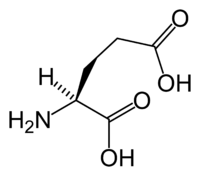
Blocking TNFα‐driven astrocyte purinergic signaling restores normal synaptic activity during epileptogenesis
Sign Up to like & getrecommendations! Published in 2018 at "Glia"
DOI: 10.1002/glia.23519
Abstract: Epilepsy is characterized by unpredictable recurrent seizures resulting from abnormal neuronal excitability. Increasing evidence indicates that aberrant astrocyte signaling to neurons plays an important role in driving the network hyperexcitability, but the underlying mechanism that… read more here.
Keywords: epilepsy; glutamate release; synaptic activity; activity ... See more keywords

Two Metabolic Fuels, Glucose and Lactate, Differentially Modulate Exocytotic Glutamate Release from Cultured Astrocytes.
Sign Up to like & getrecommendations! Published in 2021 at "Neurochemical research"
DOI: 10.1007/s11064-021-03340-y
Abstract: Astrocytes have a prominent role in metabolic homeostasis of the brain and can signal to adjacent neurons by releasing glutamate via a process of regulated exocytosis. Astrocytes synthesize glutamate de novo owing to the pyruvate… read more here.
Keywords: glutamate release; glucose lactate; two metabolic; exocytotic glutamate ... See more keywords

NMDA Receptors Containing GluN2B/2C/2D Subunits Mediate an Increase in Glutamate Release at Hippocampal CA3–CA1 Synapses
Sign Up to like & getrecommendations! Published in 2018 at "Molecular Neurobiology"
DOI: 10.1007/s12035-018-1187-5
Abstract: NMDA receptors (NMDARs) are involved in synaptic transmission and synaptic plasticity in different brain regions, and they modulate glutamate release at different presynaptic sites. Here, we studied whether non-postsynaptic NMDARs, putatively presynaptic (preNMDARs), are tonically… read more here.
Keywords: glutamate release; ca1 synapses; ca3 ca1; release ... See more keywords

Neferine, a bisbenzylisoquinoline alkaloid of Nelumbo nucifera, inhibits glutamate release in rat cerebrocortical nerve terminals through 5-HT1A receptors.
Sign Up to like & getrecommendations! Published in 2020 at "European journal of pharmacology"
DOI: 10.1016/j.ejphar.2020.173589
Abstract: Neferine, a bisbenzylisoquinoline alkaloid present in Nelumbo nucifera, has been reported to exhibit neuroprotective effects. Because reduced glutamatergic transmission through inhibition of glutamate release has been proposed as a mechanism of neuroprotection, we investigated whether… read more here.
Keywords: inhibits glutamate; glutamate release; ht1a receptors; neferine bisbenzylisoquinoline ... See more keywords

Redox tuning of Ca2+ signaling in microglia drives glutamate release during hypoxia
Sign Up to like & getrecommendations! Published in 2018 at "Free Radical Biology and Medicine"
DOI: 10.1016/j.freeradbiomed.2018.02.036
Abstract: ABSTRACT Hypoxia causes oxidative stress and excitotoxicity, culminating in neuronal damage during brain ischemia. Hypoxia also activates microglia, the myeloid resident cells of the brain parenchyma. Upon activation, microglia release high amounts of the neurotransmitter… read more here.
Keywords: glutamate release; ca2 signaling; redox; hypoxia ... See more keywords

Blockade of α2-adrenergic or metabotropic glutamate receptors induces glutamate release in the locus coeruleus to activate descending inhibition in rats with chronic neuropathic hypersensitivity
Sign Up to like & getrecommendations! Published in 2018 at "Neuroscience Letters"
DOI: 10.1016/j.neulet.2018.04.011
Abstract: Locus coeruleus (LC)-spinal noradrenergic projections are important to endogenous analgesic mechanisms and can be activated by local glutamate signaling in the LC. The current study examined the local glutamatergic, GABAergic, and noradrenergic influences on glutamate… read more here.
Keywords: descending inhibition; glutamate; locus coeruleus; glutamate release ... See more keywords

Formation and Maintenance of Functional Spines in the Absence of Presynaptic Glutamate Release
Sign Up to like & getrecommendations! Published in 2017 at "Neuron"
DOI: 10.1016/j.neuron.2017.03.029
Abstract: Summary Dendritic spines are the major transmitter reception compartments of glutamatergic synapses in most principal neurons of the mammalian brain and play a key role in the function of nerve cell circuits. The formation of… read more here.
Keywords: formation maintenance; functional spines; glutamate release; release ... See more keywords

The reduction in glutamate release is predictive of cognitive and emotional alterations that are corrected by the positive modulator of AMPA receptors S 47445 in perinatal stressed rats
Sign Up to like & getrecommendations! Published in 2018 at "Neuropharmacology"
DOI: 10.1016/j.neuropharm.2018.03.018
Abstract: &NA; S 47445 is a positive modulator of glutamate AMPA‐type receptors, possessing neurotrophic and enhancing synaptic plasticity effects as well as pro‐cognitive and anti‐stress properties. Here, the drug was assessed in the perinatal stress (PRS)… read more here.
Keywords: reduction; prs; glutamate release; positive modulator ... See more keywords

Restoring glutamate homeostasis in the nucleus accumbens via endocannabinoid-mimetic drug prevents relapse to cocaine seeking behavior in rats
Sign Up to like & getrecommendations! Published in 2021 at "Neuropsychopharmacology"
DOI: 10.1038/s41386-021-00955-1
Abstract: Impaired glutamate homeostasis is a key characteristic of the neurobiology of drug addiction in rodent models and contributes to the vulnerability to relapse to drug seeking. Although disrupted astrocytic and presynaptic regulation of glutamate release… read more here.
Keywords: cocaine; glutamate homeostasis; glutamate; glutamate release ... See more keywords

Vesicular glutamate release from central axons contributes to myelin damage
Sign Up to like & getrecommendations! Published in 2018 at "Nature Communications"
DOI: 10.1038/s41467-018-03427-1
Abstract: The axon myelin sheath is prone to injury associated with N-methyl-d-aspartate (NMDA)-type glutamate receptor activation but the source of glutamate in this context is unknown. Myelin damage results in permanent action potential loss and severe… read more here.
Keywords: glutamate release; myelin damage; vesicular glutamate; glutamate ... See more keywords

Multiplex imaging relates quantal glutamate release to presynaptic Ca2+ homeostasis at multiple synapses in situ
Sign Up to like & getrecommendations! Published in 2019 at "Nature Communications"
DOI: 10.1038/s41467-019-09216-8
Abstract: Information processing by brain circuits depends on Ca2+-dependent, stochastic release of the excitatory neurotransmitter glutamate. Whilst optical glutamate sensors have enabled detection of synaptic discharges, understanding presynaptic machinery requires simultaneous readout of glutamate release and… read more here.
Keywords: glutamate release; multiple synapses; presynaptic ca2; glutamate ... See more keywords